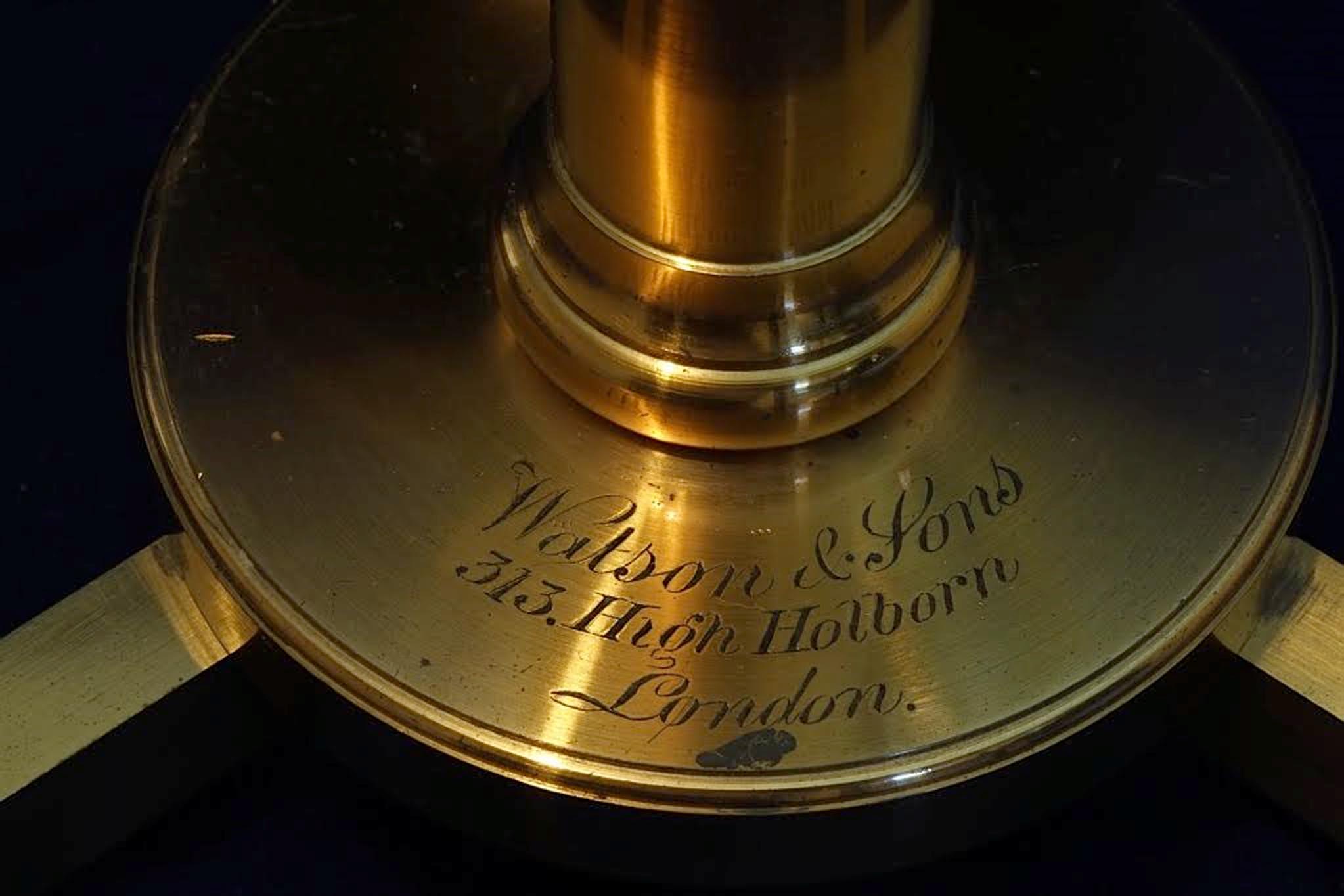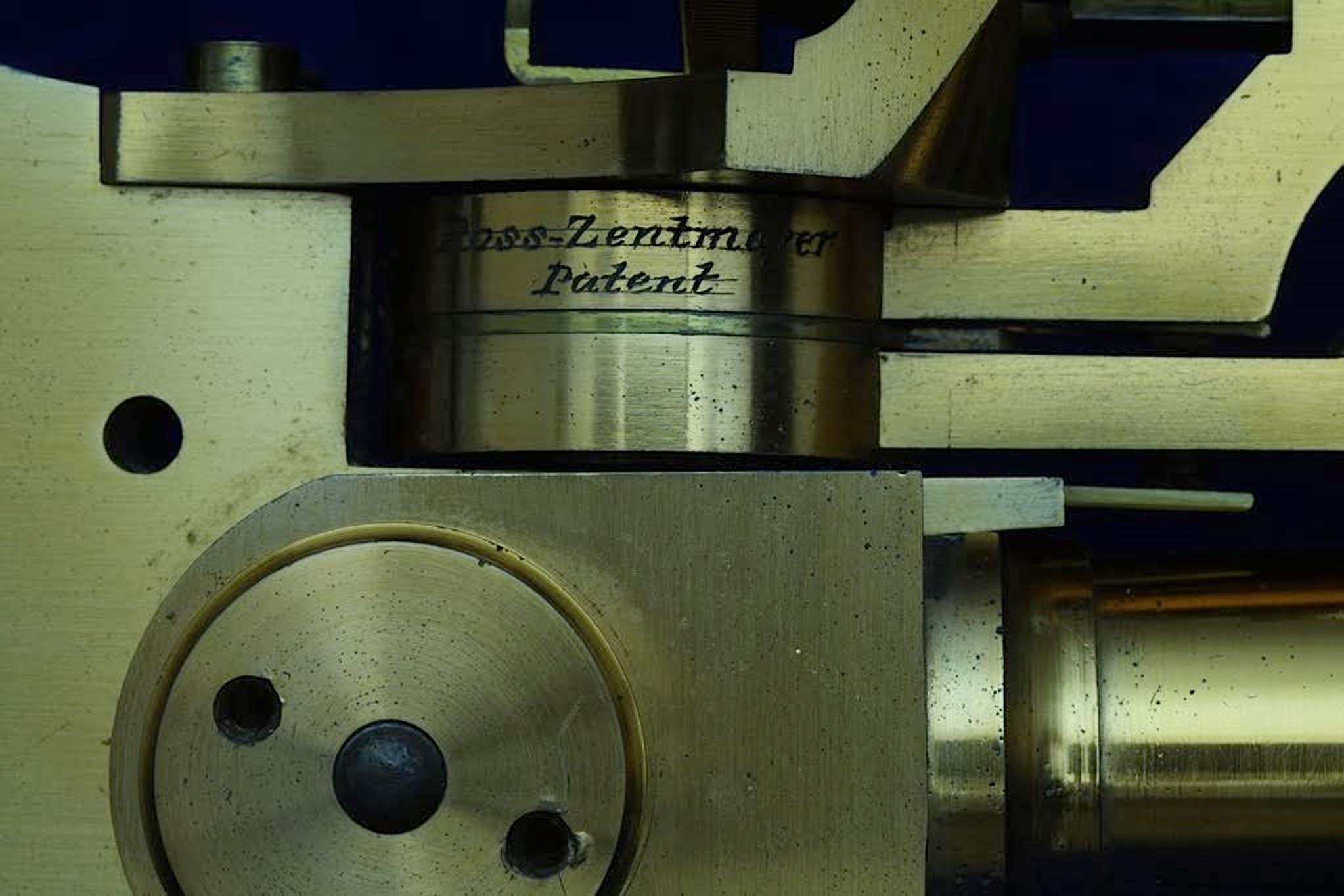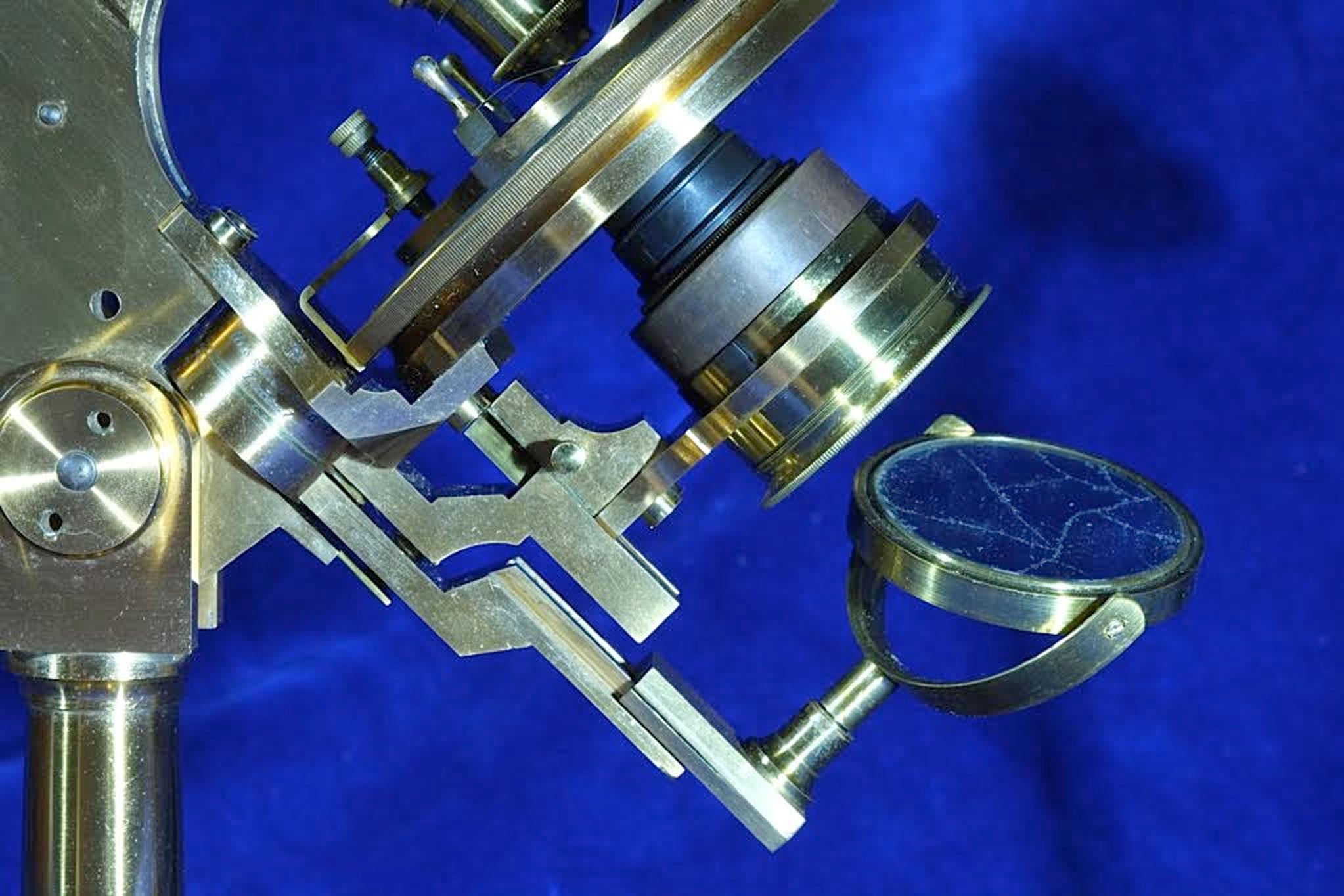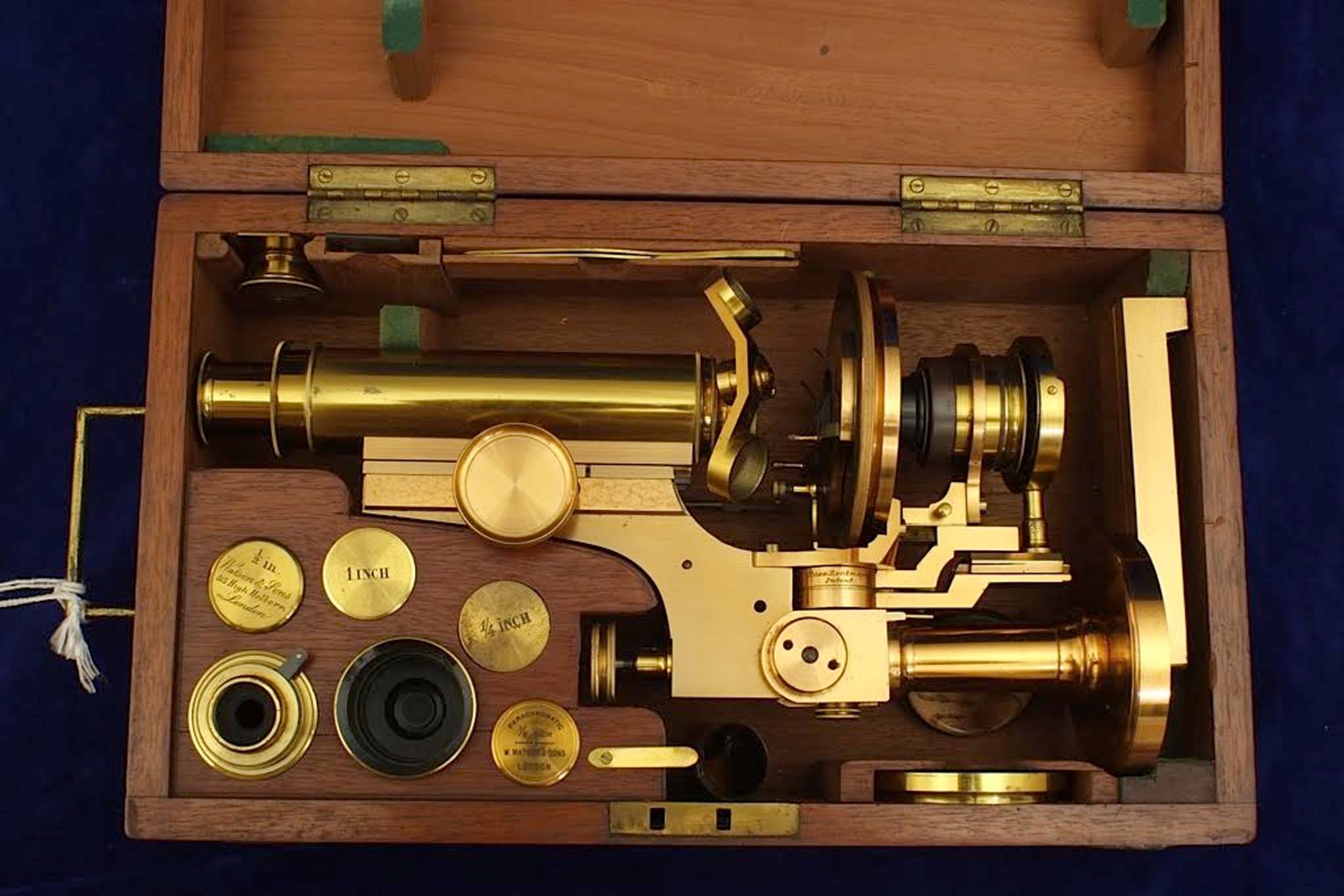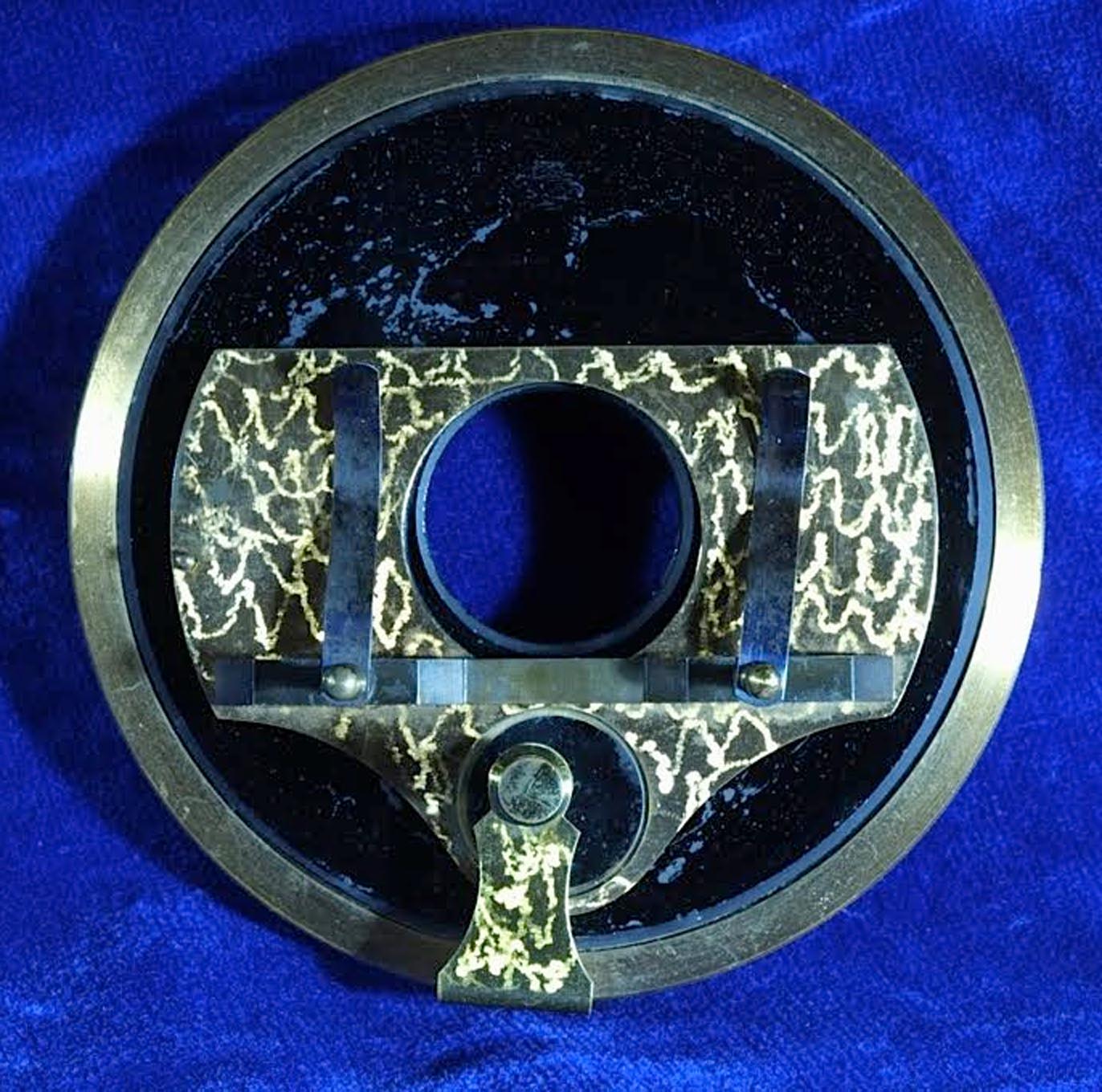MICROSCOPE-ANTIQUES.COM © 2013-15.
WATSON-BULLOCH BIOLOGICAL TYPE MICROSCOPE
c. 1884
SIGNED:
SERIAL NUMBER: 1537
MODEL: 'PORTABLE SWINGING MIRROR AND SUBSTAGE MICROSCOPE'
Please Click On Any Picture for a Larger Version
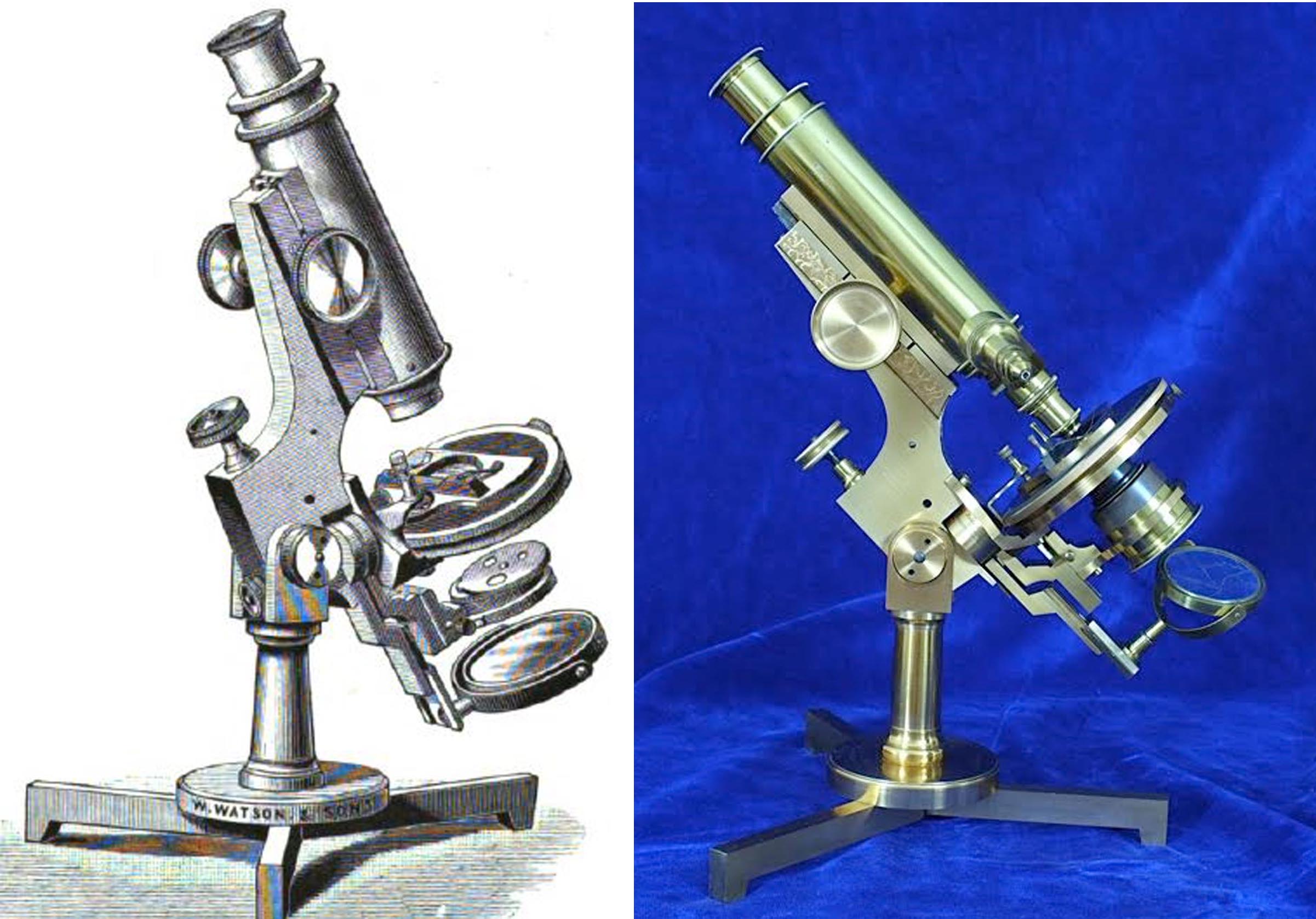
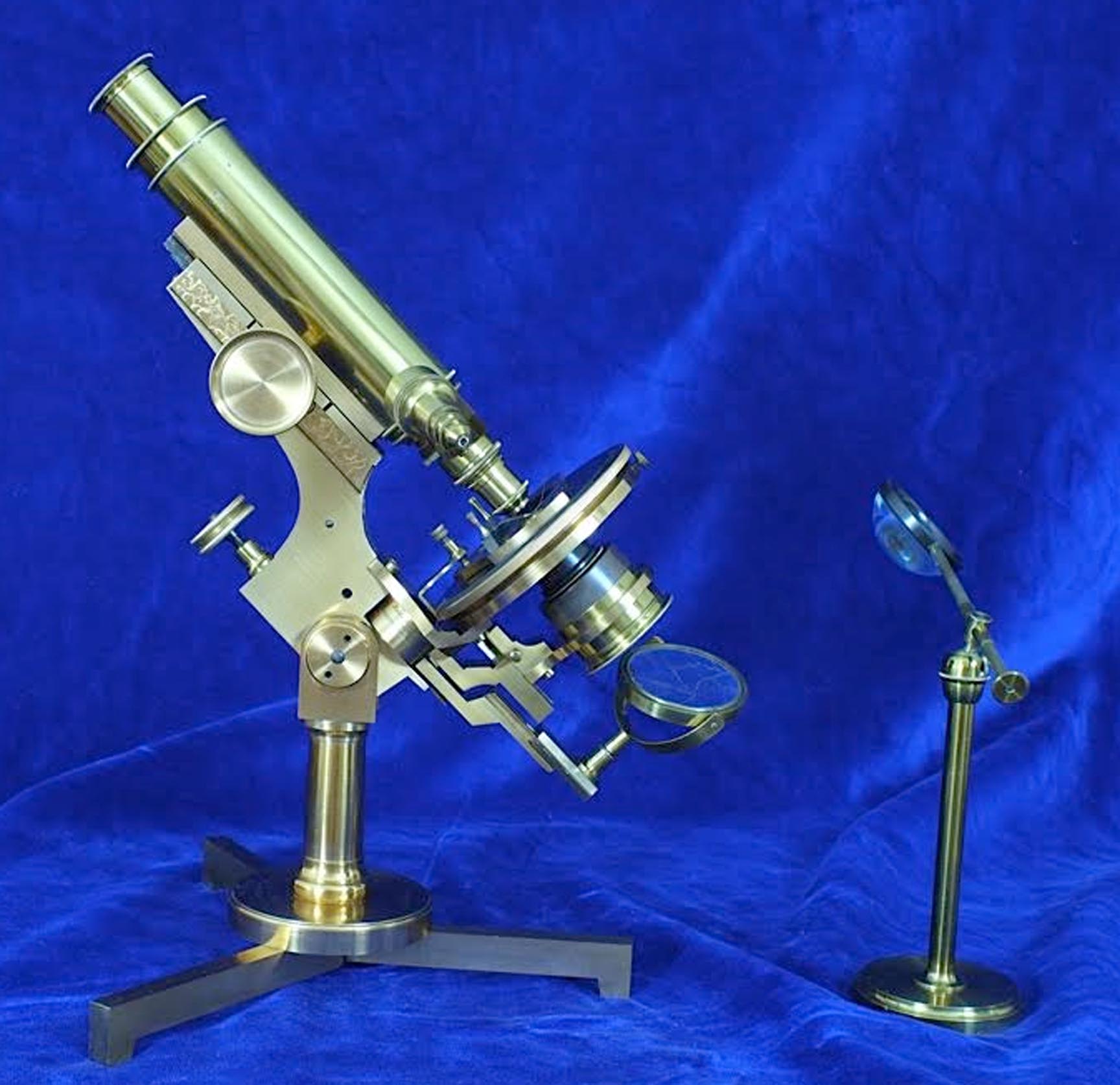 DESCRIPTION AND NOTES:This instrument is not in my collection and I am very grateful to the owner and photographer for allowing me to share it with you on this website.
Signed in Script on the Foot:
DESCRIPTION AND NOTES:This instrument is not in my collection and I am very grateful to the owner and photographer for allowing me to share it with you on this website.
Signed in Script on the Foot: .Watson & Sons., 313 High Holborn, London.
In Addition, Signed on the swinging substage:
Ross Zentmeyer Patent
. No serial number. The microscope arises on a single pillar from a folding tripod foot which is quite similar to the Beck portable foot design. The instrument has a Lister limb with rack and pinion coarse focus and long lever fine adjustment within the limb. Just as in the Bulloch Biological model, there is a dual swinging substage. The condenser mount slides up and down on one of the swinging tailpieces, while the mirror mount slides up and down the other. The reference to the Ross-Zentmeyer patent refers to the British patent that Ross took out on the Zentmeyer swinging substage, which was a single swinging type, not double as in this design originated by Walter Bulloch. The glide stage, which was invented by Zentmayer, is similar to those used on both Bulloch and Zentmeyer stands among others. There is a double nosepiece, a single ocular, and four objectives, two of which are in cans signed by Watson. Other accessories include a livebox, stage forceps, Watson-type bullseye condenser on stand, and substage condensers. It is all housed in a very nice mahogany hardwood case. The instrument appears to be 100% complete.
HISTORY OF THE WATSON-BULLOCH MICROSCOPE
The microscope pictured above features a double swinging substage with its axis at the level of the stage. Although swinging substages were provided on many models for many years, it was Joseph Zentmayer who first patented a swinging substage with the axis of rotation at the level of the stage in August of 1876. Zentmayer had both the condenser and mirror on the same swinging tailpiece. Later, in May 1879, Walter Bulloch patented the double swinging substage, where the mirror and condenser were each on separate swinging tailpieces each concentric with each other and again with the axis of rotation at the level of the stage. The Ross company was very impressed with the swinging substage and Ross and Zentmayer patented this swinging substage in England. Ross' microscopes utilizing this were called the 'Ross-Zentmayer' models, and two of these are listed on this site. It is interesting that in England the Ross-Zentmayer patent was taken to include dual swinging tailpieces, unlike in America where Bulloch held a separate patent on the dual type.
This microscope is based on the Bulloch 'Biological' or 'New Biological' as it was first called. The main difference between that stand and this one is the design of the foot. Walter H. Bulloch was born in Scotland and emigrated with his parents to New York as a teenager. He moved to Chicago in 1866. A 1879 patent is for features of his design used on the Professional, Biological, and 'A1' Congress stands. Bulloch's stands became quite well known and his designs were published in the JRMS. His designs were obviously well respected, and as noted here, Watson & Son produced their version of his Biological stand, and it was reported in the JRMS in 1883. Curiously, the Watson delivery books do not show this exact serial number, but all the microscopes from serial 1531 to 1539 do date to 1884. Bulloch had longstanding bad health and died in November of 1891.
For more about Walter Bulloch and his various designs see the various articles about his microscopes on this web site. For a tabular listing of Bulloch's locations and activities see the Bulloch Chronology Page. Pages devoted to all the different Bulloch microscope models illustrated with both engravings and actual examples are on this site-see the articles link above for this and other Bulloch-related articles.


